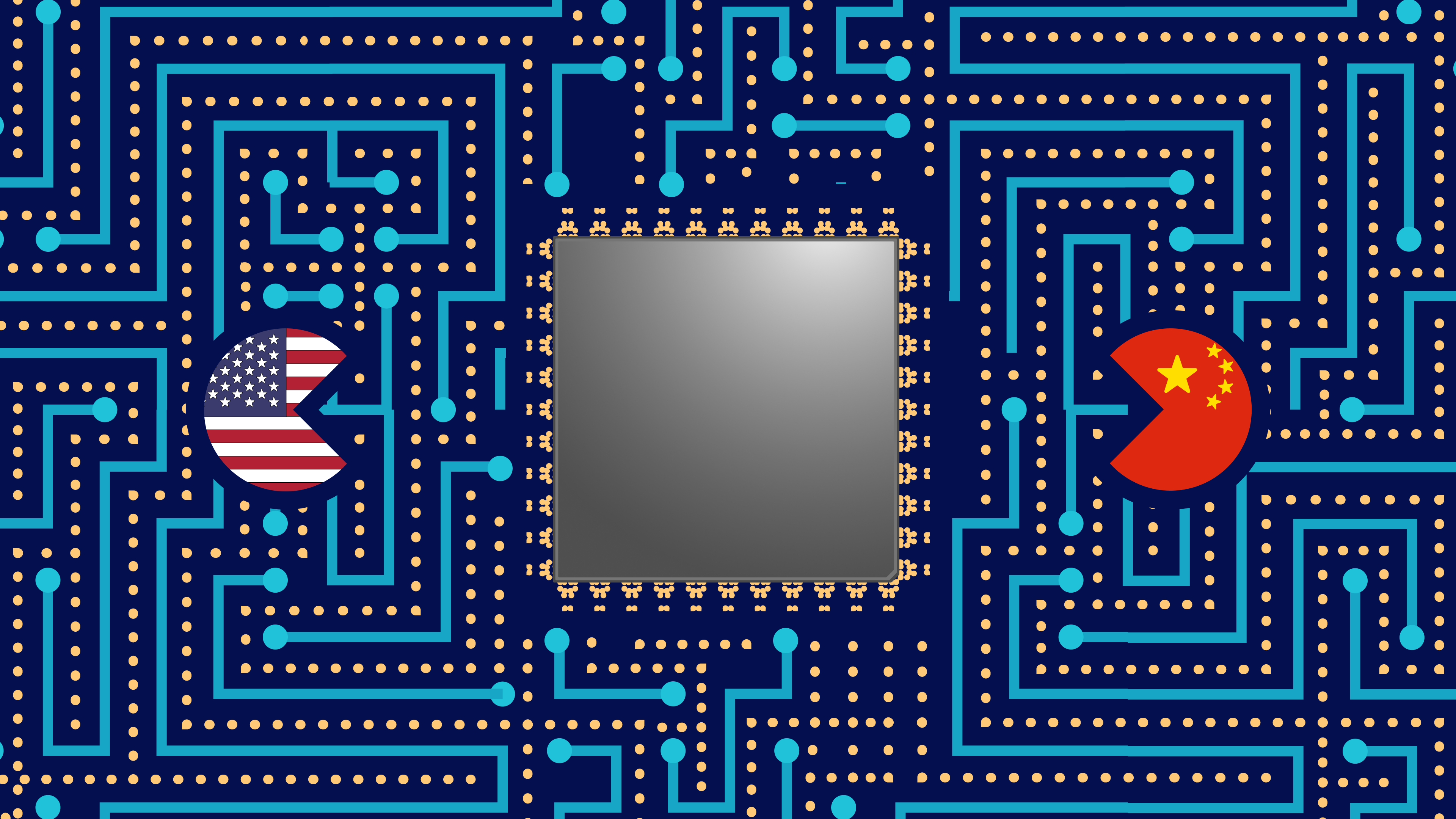Your phones and cars aren’t going to work the same after new U.S. rules on selling chips to China
New export controls imposed by America’s Commerce Department aim to stop China from making advanced semiconductors. But the rules will have plenty of unintended consequences.

A package of highly restrictive export controls released in early October by the U.S. shook the Chinese and global semiconductor industries. But gauging the impact on both China’s semiconductor aspirations and the collateral damage to the global industry of the U.S. Commerce Department’s Bureau of Industry and Security’s new rules will take time.
Many in key parts of the semiconductor industry were taken by surprise by the lack of any comment period or phase in of the requirements, and by the U.S. persons controls, which led to a panic on social media on both sides of the Pacific among engineers who work or have worked in both China and America. Many have criticized what they see as the lack of a coherent roll out plan that was sensitive to industry realities. The new rules also include specific restrictions on technologies that are not considered leading edge, where there does not seem to be a real national security justification.
It took more than two years for the full impact to register on Huawei of the May 2019 Entity List action and the May 2020 extension of U.S. export controls extraterritorially, essentially crushing the firm’s consumer business, and undermining all of its major business lines. In this case, the biggest impact was created by the so-called foreign direct product rule (FDPR), which cut Huawei off from the manufacturing base for advanced semiconductors for all of its product lines. But Huawei was a single company, while the new rule will impact dozens of firms across the semiconductor industry.
China’s Ministry of Industry and Information Technology (MIIT) has held a series of emergency meetings on the rules over the past week, and some Chinese participants warned that the rules threaten the entire industry. Memory leader YMTC 长江存储 apparently warned that its operations were in jeopardy, though the firm has denied it was summoned to such as meeting, adding to the confusion.
How to unpack these rapid developments? The situation is evolving rapidly and some of the media reporting and speculation on Chinese social media has almost certainly overstated the impact, but it is probably too early to assess the full impact on both the domestic Chinese semiconductor industry, and U.S. and foreign semiconductor firms that are closely integrated into China’s semiconductor supply chains.
Cutting off access to new technology
The intent of the new Commerce Department controls appears to be to try to place strong limits on China’s ability to develop indigenous capabilities to support advanced computing, meaning artificial intelligence (AI) and supercomputing, while at the same time limiting the impact on mature semiconductor production, supply chains, and U.S. companies. It will be critical to watch how the rule implementation and industry reaction evolve as the Commerce Department attempts to thread this needle.
The new Commerce Department package has two major elements:
- Restricting Chinese company access to advanced graphics processing units (GPUs) produced by U.S. market leaders Nvidia and AMD, which are widely used by primarily Chinese commercial companies and research institutes. The GPU portion is also part of a broader set of restrictions on most inputs to high performance computers and supercomputers. The full impact of this ban, if it is carried out (presumably) with a denial of licenses for all end users in China, will be profound and is dealt with in depth here and here.
- The second major portion of the package are new controls placed both on technologies and U.S. persons supporting production of specific types of semiconductors at China-based facilities, both Chinese and foreign owned. The U.S. persons provisions are unprecedented, and as we will see, probably the most important element of the new package, though many questions remain about how it will be implemented.
Since the new rule was released, there has been much discussion, some of it uniformed, about what the rules require or don’t, including claims that the Biden Administration has forced all U.S. persons working on semiconductors in China to choose to resign. These claims are not accurate, but the evolving situation is complex, and people are reacting to how they think the rules will be enforced and what this implies for the future of the industry they are working in.
The technology and personnel controls apply to specific technology nodes for both logic chips — think CPUs and GPUs — and memory chips. The thresholds established in the new rule appear designed to freeze China’s domestic capabilities at nodes determined by the U.S. government:
- 16/14 nanometres (nm) for logic;
- 128 layer for NAND memory;
- 18 nm half-pitch for DRAM memory.
The levels are also designed to target specific Chinese companies:
- SMIC 中芯国际 for logic;
- YMTC for NAND;
- CXMT 长鑫存储 for DRAM.
All of these companies are already manufacturing semiconductors at or above the technology levels specific in the new rule.
The rule is designed cleverly to cut off the companies’ ability to move up the technology added value chain by restricting them from acquiring new equipment. The new controls add 11 new types of production equipment under a new Export Control Classification Number (ECCN) that covers a complex mix of capabilities required for advanced node production. It also applies to specially designed parts and components for such equipment, and software and technology for their development or production. Perhaps most significantly, the new rules also endanger the current operations of Chinese semiconductor firms producing at the targeted technology levels by requiring the U.S. persons supporting the companies’ operations at these technology levels to obtain a license. Why is this important? It is one thing to cut off acquisition of new equipment — SMIC, for example, has been unable to acquire advanced lithography gear for more than two years — and completely another to target the firm’s existing operations via the ongoing support they receive from toolmakers.
What exactly is a U.S. person?
The crux of the matter is how modern semiconductor foundries operate. Every company in the industry operating globally uses U.S. tools in the manufacturing process, and these tools require constant maintenance and support. The reaction of all the U.S. tool makers to the new rule taking effect October 12 has been to pull all support personnel from virtually all Chinese foundries they were supporting. This includes (at the very least) YMTC, CXMT, and SMIC. Over the past week there have been chaotic meetings among the tool makers, most notably Applied Materials, Lam Research, KLA Tencor, and others, with customers, U.S. government officials, and their internal legal and government affairs teams, attempting to determine their obligations under the new rules. Some U.S. tool makers have already released estimates of the impact of the restrictions in 2023. Lam Research, for example, on an earnings call last week estimated losses in 2023 at up to $2.5 billion for 2023.
Some of the confusion arises from the wording of the rule, in the sometimes arcane language of the Export Administration Regulations (EAR). The key new U.S. persons rule, for example, includes confusingly written directives such as this:
In addition, new EAR sections 744.6(c)(2)(iv), (v), and (vi) require a license from the Commerce Department for a U.S. person to (i) ship, transmit, or transfer to or within China; (ii) facilitate such shipments, transmissions, or transfers; or (iii) service any item not subject to the EAR (i.e., a foreign-made commodity, software, or technology) that is also described in an Export Control Classification Number on the Commerce Control List in Product Groups B, C, D, or E of Category 3 that the U.S. person knows will be used in the development or production of integrated circuits at any semiconductor production facility in China, but the person does NOT know whether such semiconductor production facility fabricates integrated circuits are one of the covered types of advanced node logic, NAND, or DRAM.
Since “U.S. person” includes not only citizens and green card holders but also “Any person in the United States,” their application is broad. And the rules appear fairly explicit, in some ways, noting that there will be a presumption of denial (Commerce Department parlance for a very low probability that a license will be approved if applied for) for a U.S. person, individual or corporation, for anyone providing support of any kind to Chinese firm producing at the specified technology levels.
But this is where it becomes complicated. There are dozens of other Chinese semiconductor manufacturing operations, both currently producing commercial products, or under construction. Some of these Chinese firms are also potentially operating within the forbidden zone of technology development, but critically, the Commerce Department rule specifies only a technology level, not specific facilities. So if, for example, a particular facility is doing any work within the forbidden technology zone, it potentially taints the entire operation. In an abundance of caution, U.S. tool makers appear to be deciding to at least temporarily halt all support in China, potentially putting China’s entire semiconductor industry operations on hold. YMTC has asked all of its U.S. persons to leave as it grapples with how to comply with the rule.
The new rules specifying technology and U.S. person controls did not come with an accompanying list of specific facilities that would be covered, unlike the Entity List or other U.S. lists of offending companies, which contain specific names or multiple names, addresses, and zip codes, eliminating any doubt about who is affected or not. In this case, the lack of a publicly available list of targeted Chinese facilities — and there are many — has created a fireball of confusion, with effects that remain unclear. So far, the Commerce Department has not issued any clarifications, and one official explicitly said the department would not issue such a list. Since the rule appears pitched at the “facility” level, companies should probably assume that U.S. persons working at a facility doing any work on the targeted nodes would be covered.
In addition, the U.S. persons rule impacts a wide range of individuals working in China: Tool maker personnel working at customer sites, executives working at Chinese semiconductor firms, and persons working at foreign semiconductor firms operating in China. The latter are primarily SK Hynix, Samsung, and TSMC, all of which appear to have gotten a one year reprieve from the provisions of the rule, with licensing applications being considered on a case by case basis. This, of course, is not much of a reprieve, given the five to ten year timeline most firms use for technology development. For U.S. persons working at any of the covered facilities, their career prospects look to be now caught up in the churn of U.S.-China tech competition, and many have apparently resigned or are considering doing so. A mass exodus of U.S. executives and technicians from Chinese facilities would be a major brain drain putting further pressure on companies already attempting to cope with the loss of technical support and access to hardware and software upgrades. But it is not clear yet that this will happen.
Short-term pain but long-term gain for China’s semiconductor industry?
Chinese firms like YMTC, CXMT, and SMIC were not likely taken fully by surprise by the new rules, though it is likely the U.S. persons piece caught them off guard. These firms have likely all stockpiled certain spare parts for tools in anticipation of a cutoff of hardware, much as Huawei did with advanced semiconductors produced at TSMC before the September 2020 cutoff of TSMC’s ability to support the firm. But the U.S. persons restrictions mean that stockpiling alone may not be sufficient to allow the firms to continue to operate some production lines. Semiconductor manufacturing equipment such as lithography, etching, deposition, process control, and metrology requires constant maintenance, and typically comes with long-term maintenance contracts. One industry executive I spoke with estimated that a company like YMTC could only continue operation for at most three months without software and other updates from tool makers. U.S. tool makers are continuing to digest the new rules and determine which facilities are covered.
The combination of U.S. tool makers pulling personnel, and spare parts and software updates being withheld, and the likelihood that this uncertainty will continue for some time, throws into doubt the future operation of many facilities operated by Chinese national champions SMIC, YMTC, and CXMT. In addition, literally overnight, the U.S. export control package put all semiconductor companies in China in danger by putting a major cloud over their future development and ability to continue to attract investment. Even companies operating at more mature nodes face uncertainty, as there is now a clear glass ceiling to any future upgrade plans. Apple this week announced it was dropping YMTC as a memory supplier, a quick reaction driven by Congressional concern and the reality that the firm is now under a major cloud and is unlikely to be able to continue to innovate at more advanced nodes and keep pace with Apple requirements.
Foreign firms with major manufacturing operations may get a short reprieve, but the writing is on the wall in terms of their long-term ability to continue to use China-based operations as part of their global business model. SK Hynix, which operates a major DRAM facility in Wuxi, was already barred from upgrading the multibillion facility to use extreme ultraviolet lithography gear, controlled on a country basis by the Wassenaar Arrangement. In the highly competitive world of memory, not being able to keep pace with technology development means a rapid decline of market share. Though China-based facilities, including those of SK Hynix and Samsung and others operated by SK Hynix and Solidigm, Intel’s former memory/storage unit in Dalian, and TSMC fabs in Shanghai and Nanjing will remain players in their respective market segments, over time, their inability to move up the value chain will impact their business models and long-term commitment to manufacturing in China. TSMC, for example, is also caught in the GPU focused part of the rule, and late last week suspended foundry services support for GPU major Biren Technology 壁仞科技, another major hit to the Chinese tech industry.
Does Beijing have bigger fire power than rare earths?
Prospects for the U.S. to get key players such as Japan and the Netherlands on board appear dim at present. With the new controls targeting logic chips at 16/14 nm, there is concern that the U.S. is not just targeting leading edge semiconductors, but also more mature nodes that are big revenue generators for tool makers. It’s very likely that the companies most impacted — including YMTC, CXMT, and SMIC — will turn to Japanese suppliers and ASML of the Netherlands to continue supporting production at 16/14 nm. They also have the potential of using existing equipment to go to the more advanced 7nm chips, as SMIC has already done.
The new rules will accelerate a process that started during the Trump era of extending export controls extraterritorially, which compels companies to make designs that are not dependent on U.S. technology to reduce future risks to supply chains. All of this could ironically have the effect of being a short-term pain for China’s semiconductor industry, but a long-term gain, as foreign suppliers adjust to the rules and find ways around some of the controls.
For now, with the global semiconductor industry already reeling from global recession and supply chain disruptions, the Commerce Department moves come at a very difficult time, and the rolling collateral damage of taking out a number of producers in the short term and a large raft of entrants remains unclear. The impact on U.S. tool makers is sure to be substantial, given that China is the most active market for new semiconductor fabs and the big players derive substantial revenue from the China market.
Finally, U.S. officials plan to take the new restrictions to the Wassenaar Agreement in 2023 for broader multilateral approval. This will include the personnel restrictions, and could require other countries to include controls on their citizens working to support development of the covered technologies. Already, Dutch lithography giant ASML has ordered its U.S employees to cease serving China-based customers pending a review, though the number of such individuals is likely low and the firm has also likely ordered its China-based U.S. persons to similarly stand down. ASML in particular has a large exposure in China, including a mix of Dutch, U.S., European, and Chinese employees. ASML has remained bullish on China despite controls on advanced lithography equipment, noting that “China’s semiconductor scene is growing at an unrivaled rate.” ASML and some other tool makers have made initial statements suggesting the impact of the new rule on their overall business will be low, but noting that the effect of the overall controls could mean the hit to their business in China is larger as Chinese fabs are unable to put together production lines without other U.S. tools.
Sorting out who can continue to work on which projects in China will be complex for both U.S., European and Japanese firms going forward, and in an industry with long time horizons, companies will also have to determine the long term risks of allowing workers to support Chinese customers who may eventually want to work on controlled technology, adding further complexity and downsides for Chinese firms.
Finally, the big wild card here will be how Beijing chooses to react once officials have digested the short and long-term impacts of the overall package of controls. Beijing has typically been very reluctant to take strong actions targeting U.S. company operations in China via tools such as the Unreliable Entity List and the Anti-Foreign Sanctions Law. However, with the new restrictions targeting key parts of the Chinese technology sector such as AI and supercomputing, and a broad range of companies, Beijing may be forced to react with stronger asymmetric measures. U.S. officials have likely calculated that any response Beijing makes will cause more pain to China over time than to U.S. interests.
While many have focused on things like rare earths and EV battery minerals as potential areas where Beijing could choose to respond by taking measures such as throttling some exports, there are also a number of key sectors of the ICT and semiconductor industry where China is a key if not the major player: smart device and televisions screen displays, where China based production accounts for a major portion of output, and legacy semiconductors and packaging, where Chinese firms, including SMIC, are major players. Even though an iPhone or AI server in the cloud uses the most advanced processors from Apple, Nvidia, or Intel, a particular device or system also uses dozens of less advanced semiconductors, many of which are produced and packaged in China. Beijing could choose to weaponize these types of supply chains also, once the dust settles on the Party Congress and the new tech savvy Politburo and Standing Committee is in place. As the full impact of the U.S. attempt to freeze China’s semiconductor industry in place sinks in, there are no low risk options that would not also result in damage to the business environment in China at a time when the economy remains in considerable distress resulting from COVID and the global economic downturn.






